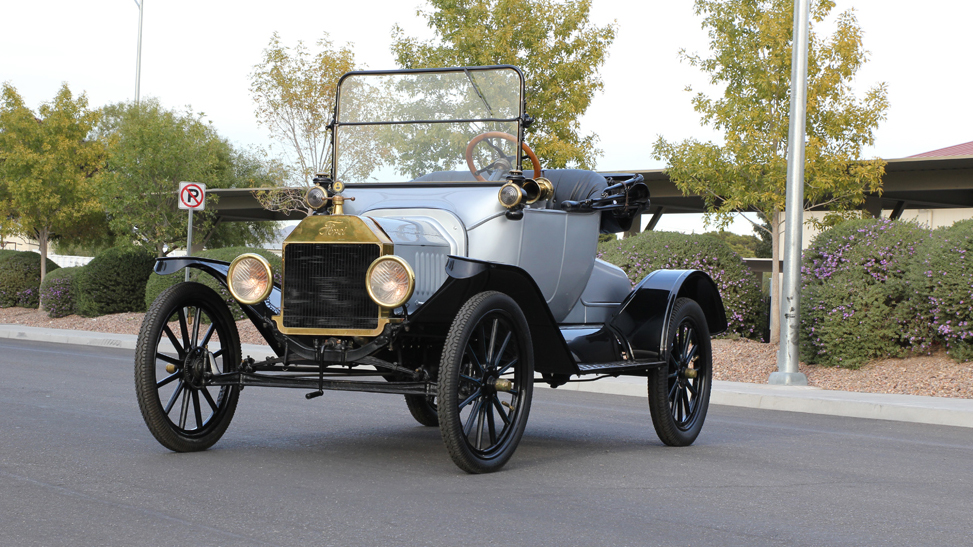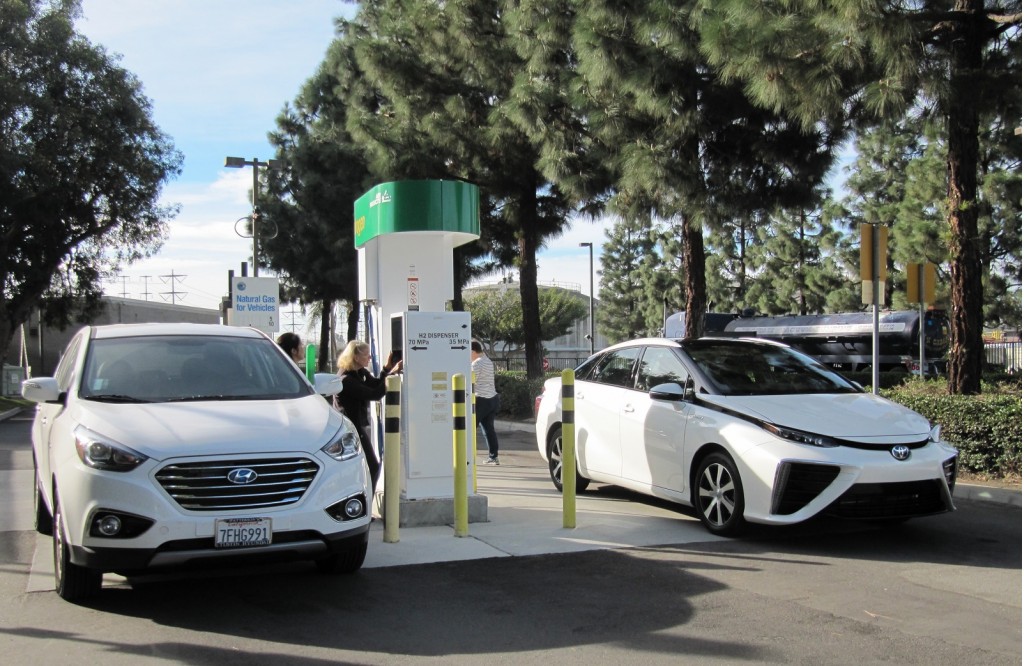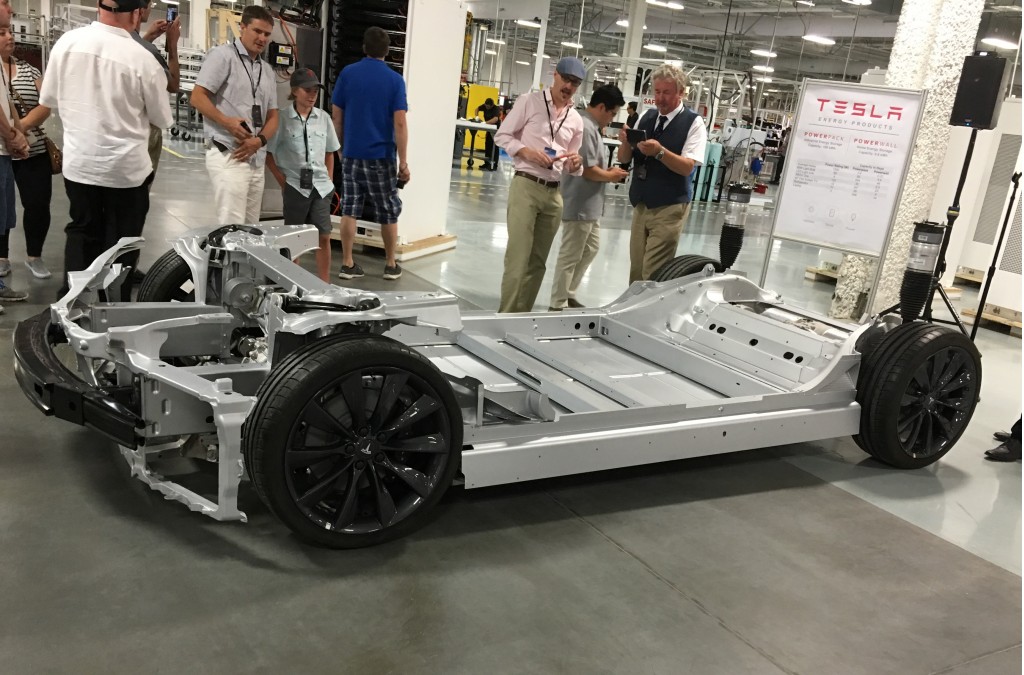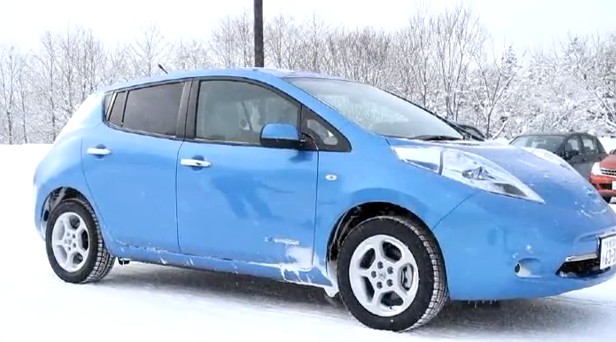![2016 Toyota Mirai - Quick Drive - Portland, July 2015 [photo: Doug Berger] 2016 Toyota Mirai - Quick Drive - Portland, July 2015 [photo: Doug Berger]](https://images.hgmsites.net/lrg/2016-toyota-mirai_100521497_l.jpg)
2016 Toyota Mirai - Quick Drive - Portland, July 2015 [photo: Doug Berger]
Toyota's staunch, unswerving support for hydrogen fuel cells has astonished and aggravated many in the electric vehicle community.
For some of them, the technology is at best an inferior solution—and at worst is fossil fuel-friendly vaporware, a Judas in Jesus's clothing, if you will.
With Daimler's recent announcement that it would de-emphasize fuel cells in favor of batteries, your author checked in with contacts at Toyota to ask if they too would be moderating their fuel-cell efforts.
DON'T MISS: 10 Questions On Hydrogen Fuel-Cell Cars To Ask Toyota, Honda & Hyundai (Oct 2014)
The company is keeping the faith.
What's more, it's doing so based on a four-letter word: cost. That's right: Toyota's long game is to use fuel cells to beat batteries on cost.
A review of relevant literature hints at how the company might achieve this.

Toyota FCV hydrogen fuel cell vehicle prototype during cold-weather endurance testing in N America
Author disclosures
For all the shared characteristics of fuel cells and the batteries, and their shared differences with internal combustion, proponents of each technology can be passionately dismissive of each other, bringing to mind Sigmund Freud's observation about the narcissism of small differences.
Mutual suspicion abounds.
In the interest of disclosure, this author worked in the fuel cell sector for about 15 years. I also bought a plug-in hybrid five years ago, despite not being able to charge at home then, and I strongly support electric vehicles.
They are available at commercial scale today, and their collective impact will dwarf that of fuel-cell vehicles for the foreseeable future.
My equally strong support for continued development of hydrogen fuel-cell vehicles draws from General Motors CEO Alfred Sloan's philosophy of building "a car for every purse and purpose".

1915 Ford Model T from the Rogers' Classic Car Museum collection
Under Sloan's leadership, GM's basket of brands overtook Ford in sales, as the latter's singular focus on the Model T led to its near-ruin.
The lesson, I believe, is that having more zero-emission transportation options can only speed our transition to an emission-free future.
Short of every city in every county in every country passing right-to-charge legislation, it's hard to imagine batteries meeting the needs of all the world's drivers in the coming decades. It's harder still to imagine fuel cells doing so.
It's much easier to foresee that these technologies in tandem could erode the market share of combustion vehicles more quickly and deeply than either one could on its own.

2015 Hyundai Tucson Fuel Cell, 2016 Toyota Mirai at hydrogen fueling station, Fountain Valley, CA

2017 Honda Clarity Fuel Cell, Santa Barbara, CA, March 2017

2017 Honda Clarity Fuel Cell, Santa Barbara, CA, March 2017
Full circle
Daimler's March retreat from fuel cells came almost exactly 20 years after it kicked off a craze by announcing it would take a stake in Ballard Power Systems, a developer of proton-exchange-membrane fuel cells (PEMFCs).
At the time, I was interning at Ballard—and it's largely been forgotten that Daimler was bidding against General Motors, which was also collaborating with Ballard.
While GM was then building the EV1 two-seat electric car, it's important to remember that lithium-ion battery cells had been commercialized only half a decade before. They still cost about $1,000 per kilowatt-hour at the cell level.
The EV1, remember, had launched with lead-acid batteries.
![2016 Toyota Mirai - Quick Drive - Portland, July 2015 [photo: Doug Berger] 2016 Toyota Mirai - Quick Drive - Portland, July 2015 [photo: Doug Berger]](https://images.hgmsites.net/lrg/2016-toyota-mirai_100521498_l.jpg)
2016 Toyota Mirai - Quick Drive - Portland, July 2015 [photo: Doug Berger]
The steeply falling costs of lithium-ion batteries in recent years—with more to come, as the market is currently oversupplied—changed Daimler's calculus.
While fuel-cell costs have fallen by a greater percentage yet, they remain high owing to the industry's currently tiny size.
Embryonic scale
The fuel-cell industry's embryonic scale is best captured by an analogy to Tesla's Gigafactory.
Where Tesla promised its Gigafactory would produce as many gigawatt-hours of lithium ion batteries in 2020 as were sold around the world in 2014, Toyota's 2,000 or so Mirai sales in 2016 represented more than three times the megawattage of PEMFCs produced worldwide in 2014.
![Impact of Toyota Mirai production on global PEM fuel-cell production [chart: Matthew Klippenstein] Impact of Toyota Mirai production on global PEM fuel-cell production [chart: Matthew Klippenstein]](https://images.hgmsites.net/lrg/impact-of-toyota-mirai-production-on-global-pem-fuel-cell-production-chart-matthew-klippenstein_100605195_l.jpg)
Impact of Toyota Mirai production on global PEM fuel-cell production [chart: Matthew Klippenstein]
[EDITOR'S NOTE: As readers pointed out in our Comments, the original version of the graphic above was one of three that needed some work. We have now replaced it, and we apologize for the errors.]
At such minuscule production levels—running at full capacity, Toyota will produce about twelve fuel cell systems per workday this year—part costs are high and manufacturing is labor-intensive. (At low production levels, it's not worth investing in automation.)
As such, Toyota's reported $50,000 fuel cell powerplant is far more expensive than it would be at larger scale. The company's stated plan is to produce 3,000 fuel cell electric vehicles per year through 2019, then jump to 30,000 in 2020.
It would presumably take another full model cycle (taking the company into the late 2020s) for production to surpass 100,000 units per year.
Given these timeframes, it's understandable why Daimler CEO Dieter Zetsche would say fuel cells would not play a "central role" at the company. Even in Toyota's fully-committed scenario, product volumes will be low for years to come.
As for the prices fuel-cell systems could reach at higher production volumes, the United States Department of Energy (DOE) Fuel Cell Technology Office provides fuel cell system and hydrogen tank cost targets, assuming commercial volumes (typically 500,000 units per year).
![Fuel-cell system cost modeled at 500,000 units a year [chart: Matthew Klippenstein] Fuel-cell system cost modeled at 500,000 units a year [chart: Matthew Klippenstein]](https://images.hgmsites.net/lrg/fuel-cell-system-cost-modeled-at-500000-units-a-year-chart-matthew-klippenstein_100604579_l.jpg)
Fuel-cell system cost modeled at 500,000 units a year [chart: Matthew Klippenstein]
Its Vehicle Technology Office, meanwhile, provides its own battery pack cost targets.
This gives us two data sets from a relatively unbiased source.
![U.S. Department of Energy cost targets for fuel cells, hydrogen tanks [chart: Matthew Klippenstein] U.S. Department of Energy cost targets for fuel cells, hydrogen tanks [chart: Matthew Klippenstein]](https://images.hgmsites.net/lrg/u-s-department-of-energy-cost-targets-for-fuel-cells-hydrogen-tanks-chart-matthew-klippenstein_100604580_l.jpg)
U.S. Department of Energy cost targets for fuel cells, hydrogen tanks [chart: Matthew Klippenstein]
Battery cost projections
The DOE Vehicle Technology Office supports research and development activities with the goal of achieving battery pack costs of $125 per kilowatt-hour by 2020.
For context, GM product chief Mark Reuss confirmed to Green Car Reports that the Chevy Bolt EV's cell costs are $145 per kilowatt-hour, with third-party estimates of pack costs of around $215 per kwh.
Elon Musk has reportedly stated he will be disappointed if Tesla's cell costs aren't below $100 per kwh by 2020, which might suggest pack costs in the $150 per kwh range.
As of last year, the Office's most aggressive price projection was $75 per kwh at the pack level for a lithium-air chemistry … in a best-case, long-term, everything-goes-well scenario.
The Chevy Bolt's 60-kwh battery gives it a roughly 240-mile EPA range, so we'll assume that 50 kwh will be sufficient to give an electric vehicle a 200-mile range. This is no doubt over-optimistic for trucks and SUVs, but your contributor, mindful of his fuel cell background, would prefer to err in batteries' favor, than against them.
At $125 per kwh, a 50-kwh battery pack would cost $6,250; at $75 per kwh, it would cost $3,750.

Tour of Tesla battery gigafactory for invited owners, Reno, Nevada, July 2016
Fuel-cell cost projections
The DOE Fuel Cell Technology Office similarly supports activities to reduce fuel cell system costs to $40/kw-net by 2020, with an ultimate goal of reaching $30/kw-net. They model an 80 kw-net (107 hp) fuel cell system, so at high volumes the fuel cell system costs work out to $3200 and $2400, respectively.
Hydrogen tank costs are calculated separately, as they are dependent on the amount of hydrogen stored. The 2020 goal is for a tank cost of $10 per kwh. Hydrogen has an energy density of 33.3 kwh/kg, so the DOE tank cost target works out to $333 per kg.
The Hyundai Tucson fuel cell SUV runs about 250 miles on 5 kg of hydrogen, so a fuel efficiency of 50 miles per kg is about right.
Most vehicles sold in the United States have real-world ranges of 400-plus miles, meaning fuel cell vehicles would need 8 kg of hydrogen to match their combustion counterparts. This makes for a hydrogen tank price of $2670.
![Range in miles of passenger vehicles sold in the U.S. [chart: Matthew Klippenstein] Range in miles of passenger vehicles sold in the U.S. [chart: Matthew Klippenstein]](https://images.hgmsites.net/lrg/range-in-miles-of-passenger-vehicles-sold-in-the-u-s-chart-matthew-klippenstein_100604581_l.jpg)
Range in miles of passenger vehicles sold in the U.S. [chart: Matthew Klippenstein]
Batteries vs. fuel cells: Round 1
Comparing the battery and fuel cell options, the fuel cell surprisingly comes out slightly cheaper with the 2020 scenarios—assuming it's produced in large volumes, that is. (In the battle of utopias, the battery pack proves more than $1,000 cheaper.)
The battery option would have a much lower total cost of ownership, however, as electricity is far cheaper than hydrogen.
The Fuel Cell Technology Office's goal is for hydrogen to reach a price of $4 per kilogram. Given that fuel cells have more than twice the efficiency of combustion engines, this translates into a fuel cost equivalent to sub-$2 per gallon of gasoline.
Furthermore, many or most fuel cell stacks will be sized to deliver more than 80 kw of power.
![Cost projections for 200-mile battery pack vs 400-mile fuel cell car [chart: Matthew Klippenstein] Cost projections for 200-mile battery pack vs 400-mile fuel cell car [chart: Matthew Klippenstein]](https://images.hgmsites.net/lrg/cost-projections-for-200-mile-battery-pack-vs-400-mile-fuel-cell-car-chart-matthew-klippenstein_100605196_l.jpg)
Cost projections for 200-mile battery pack vs 400-mile fuel cell car [chart: Matthew Klippenstein]
[EDITOR'S NOTE: As readers pointed out in our Comments, the original version of the graphic above was one of three that needed some work. We have now replaced it, and we apologize for the errors.]
It would be premature for Tesla CEO and noted fuel cell critic Elon Musk to issue a celebratory tweetstorm, however, as the above chart assumes average car buyers would willingly switch to battery-electric vehicles with half the range they're accustomed to (and even less in cold weather). That's a big assumption.

2017 Toyota Mirai
The majority of early Model S buyers—price-insensitive early adopters—chose higher-range vehicles, after all.
Doubling the battery size in the scenarios above would add roughly $5,000 of cost.
I strongly suspect that if a consumer were given the choice between a 200-mile electric vehicle at $30,000 and a 400-mile electric vehicle at $35,000, they would take the one with more range, if they could at all afford it.
I certainly would—although whether real-world buyers would consider a hydrogen-fueled vehicle an "electric car" remains very much an open question.
So, how does the 400-mile battery vs. 400-mile fuel cell comparison look?
Batteries vs. fuel cells: Round 2
![Cost projections for 400-mile battery pack vs 400-mile fuel cell car [chart: Matthew Klippenstein] Cost projections for 400-mile battery pack vs 400-mile fuel cell car [chart: Matthew Klippenstein]](https://images.hgmsites.net/lrg/cost-projections-for-400-mile-battery-pack-vs-400-mile-fuel-cell-car-chart-matthew-klippenstein_100605197_l.jpg)
Cost projections for 400-mile battery pack vs 400-mile fuel cell car [chart: Matthew Klippenstein]
[EDITOR'S NOTE: As readers pointed out in our Comments, the original version of the graphic above was one of three that needed some work. We have now replaced it, and we apologize for the errors.]
The Department of Energy projects that mass-produced fuel cell propulsion will be cheaper than mass-produced battery propulsion.
In the 2020 cost target scenario, the fuel cell is more than $6,000 cheaper. With hydrogen at $4 per kilogram and a car that travel 50 miles per kg, it would take 75,000 miles of driving before fuel-cell vehicle ownership became more expensive—and that assumes free electricity.
Even if a second fuel-cell system were added (a much less cost-effective manner of boosting power than enlarging or redesigning the fuel-cell stack), the fuel cell vehicle would still have an up-front cost advantage of almost $3,000.
In the utopian scenario, fuel-cell propulsion proves $2,400 cheaper upfront than the battery option. Add a second fuel-cell system, and the upfront costs are even.
Did anyone see that coming? I didn't.
Yoshikazu Tanaka, the chief engineer of the Mirai, and an outspoken electric-car skeptic may not want to create a social-media profile just yet, however.
Fuel cells would only enjoy this price advantage if production scaled up dramatically—which is exactly what Toyota is trying to do.

2017 Toyota Mirai
There are other considerations as well. New-car buyers may well accept electric vehicles with 300, even 200, miles of electric range, given that most will be able to charge at home and thereby start each day with a full battery.
I expect that this will be the case for a strong majority of car buyers, but that still leaves a large addressable market of battery refuseniks.
On the other hand, some consumers may prefer to pay gasoline-like prices for a 3-minute hydrogen fill-up, than risk being caught in an hour-long lineup at a fast-charging station during a holiday weekend road trip—or risk impairing their mobility in the event of a prolonged power outage.
(Weather-related blackouts aren't uncommon in winter in snowy areas of North America.)
2012 Nissan Leaf winter test
Conclusions
In this light, Toyota's fuel-cell fervor and battery ambivalence make sense: they anticipate fuel cells becoming cheaper than batteries, or at minimum, a better solution than battery-electric vehicles.
The logic in that thought process is apparent; whether Toyota proves to be right or wrong depends (as always) on the assumptions underpinning the analysis.
Toyota has the luxury of not needing battery-electric vehicles for the next few years. Its broad inclusion of hybrids across its product line means that it's likely in good shape to meet fleet fuel-efficiency standards.
And it can probably meet regional mandates for sales of fully or partially zero-emission vehicles by allocating a sufficient number of Mirais and Prius Primes to the relevant markets.

Mercedes-Benz GLC F-Cell prototype

Mercedes-Benz GLC F-Cell prototype

Mercedes-Benz GLC F-Cell prototype

Mercedes-Benz GLC F-Cell prototype
In contrast, Daimler appears to have found itself in the opposite situation: its production is weighted towards heavy, powerful, and not particularly fuel-efficient luxury vehicles, so it must electrify its lineup to meet fuel efficiency and ZEV requirements in multiple lucrative markets around the world.
It would probably take two model cycles for Daimler to scale its fuel-cell production to materially improve its position.
And that is simply far too long a timeframe for the company. Consequently, batteries have inevitably become its core path forward.
_______________________________________











